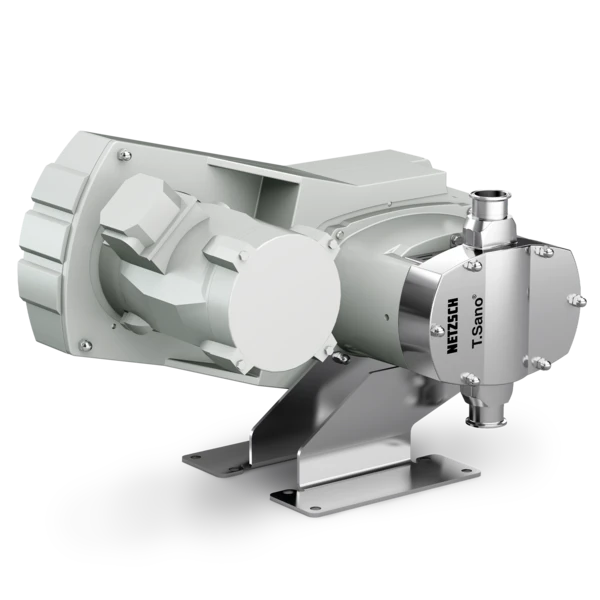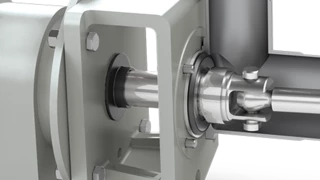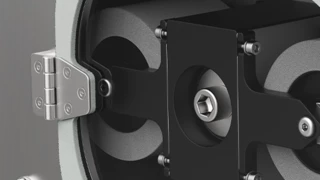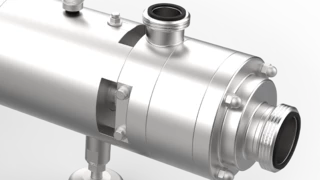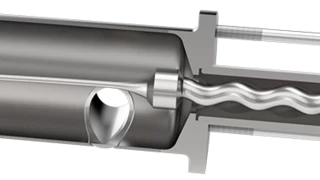Przemysł mięsny i rzeźnie
Empty Your Tanks in the Sauce Kitchen With Almost No Residual Quantity
How to increase efficiency while maintaining the highest hygienic standards
Everyone knows the problem: When containers or tanks have to be decanted in the kitchen, sometimes hot medium splashes all over the room, resulting in slippery basements. But how can you prevent this to minimise material losses and ensure the occupational safety of your employees?
Od tysięcy lat człowiek poluje i hoduje zwierzęta. Na skalę przemysłową początek rzeźnictwa datuje się dopiero w okolicach roku 1845 od rzeźni w Cincinnati/USA posiadającej proste taśmy produkcyjne. Po skonstruowaniu w 1878 roku wagonu chłodni Chicago stało się stolicą przetwórstwa mięsa w Ameryce. Opracowane tam metody przetwórstwa zostały rozpowszechnione na całym świecie.
Ponieważ wyroby mięsne bez dalszej obróbki takiej jak suszenie, wędzenie czy peklowanie pozostają również w przypadku schłodzenia zdatne do spożycia jedynie przez krótki czas, w USA już w 1906 roku wydano pierwsze przepisy chroniące konsumentów. Z powodu zagrożeń ze strony zarazków i bakterii podczas produkcji produktów mięsnych należy przestrzegać rygorystycznych ustawowych przepisów w zakresie higieny. Mają one na celu uregulowanie sposobów produkcji, przechowywania, przetwórstwa i przygotowania produktów mięsnych oraz rzeźniczych produktów ubocznych.
Higieniczna konstrukcja komponentów i maszyn oraz możliwość wyczyszczenia części instalacji jest określona w szeregu właściwych przepisów.
POMPY NEMO® zostały skonstruowane, wykonane i sprawdzone zgodnie z wytycznymi EHEDG (European Hygienic Equipment Design Group) oraz QHD (Qualified Hygienic Design). Użyte materiały posiadają dopuszczenie FDA (Food and Drug Administration) oraz BfR (Bundesinstitut für Risikobewertung). Ponadto pompy higieniczne i aseptyczne NEMO® spełniają wymogi amerykańskich przepisów 3-A Sanitary Standards oraz posiadają certyfikat GOST-R (certyfikat zgodności obowiązujący w Rosji). Także pompy z lejem w różnych wersjach znajdują zastosowanie w tłoczeniu najprzeróżniejszych mediów, takich jak na przykład farsz kiełbasiany, mięso mielone czy pasty mięsne. Do usuwania mediów takich jak na przykład krew z odłamkami kości, wnętrzności czy odpady rzeźnicze stosuje się pompy przemysłowe oraz przemysłowe pompy z lejem.

Konsultacje indywidualne
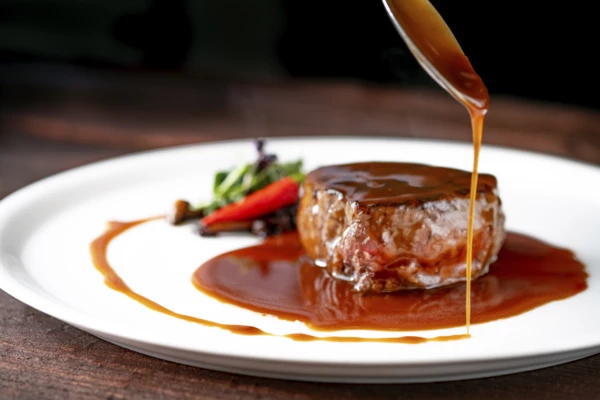
What requirements do pumps in the food industry have to meet?
Hygiene, cleanability, food safety and efficiency play a significant role in the food industry. This also applies to the emptying of containers. The pumps have to meet the high hygienic requirements in food production to avoid contamination of the products. Another requirement is cleanability. Pumps should be easy and quick to clean to minimise cleaning times and ensure efficient production. In addition, the pumps must be made of materials suitable for contact with food to avoid changes in taste or unpleasant flavours.
These are the challenges to overcome when emptying containers or tanks
For a long time, a sauce kitchen used a lift-and-tilt system to empty the basic cooker, which repeatedly caused significant problems for the operators. Hot medium splashing around and the resulting slippery basements were questionable from the point of view of hygiene and work safety. In addition, this resulted in heavy material losses. Efficient production of sauces in compliance with all hygiene standards was out of the question. Due to the different forms of the containers, however, no classic barrel emptying system was suitable. A progressing cavity pump was also no longer an option due to the limited space in the sauce kitchen. However, NETZSCH had the optimal solution in its broad product portfolio: A TORNADO® T.Sano® rotary lobe pump with smooth surface.
How to increase efficiency when emptying tanks in a sauce kitchen
The TORNADO® rotary lobe pump offers you countless advantages compared to a lift-and-tilt system. Thanks to the belt drive, the T.Sano® operates completely oil-free and thus poses no risk of contamination. In addition, it is particularly low-maintenance. The rotary lobe pump is also the optimum solution in matters of hygiene. The completely smooth housing is virtually impervious to dirt and dust. This is made possible by the compact and space-saving design, which avoids corners, edges or dead spaces. On the other hand, the T.Sano® offers you effortless cleaning (CIP - "Cleaning-In-Place-Procedure") and sterilisation (SIP - "Sterilisation-in-Place-Procedure"). You can clean the system in a circular or continuous process without prior disassembly.
The sauce kitchen's rotary lobe pump was connected to the basic cooker and the cooking vessel using food-safe hoses. The prepared essential product can thus be conveniently pumped into the next container or tank for refinement. Dangerous splashes and slippery basements are no problem anymore. In this way, you prevent cost-intensive product losses and increase your efficiency. In addition, the hygiene standard has been significantly improved by the closed conveying system. Incidentally, the sauce ingredients are not affected by this gentle conveying. Upgrade to a TORNADO® T.Sano® rotary lobe pump and make your process in the food industry safer and more efficient in the future.
TORNADO® T.Sano® rotary lobe pump with smooth surface
- Medium: Sauce base
- Capacity: 70 m³/h
- Pressure: Max. 12 bar
- Speed: 800 rpm
